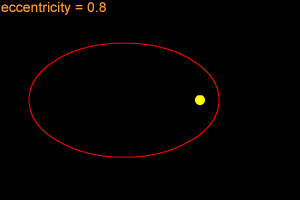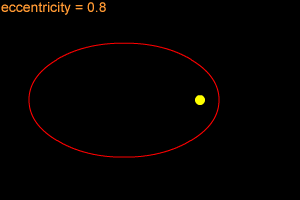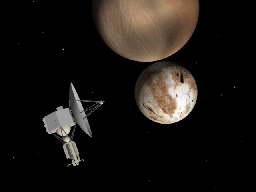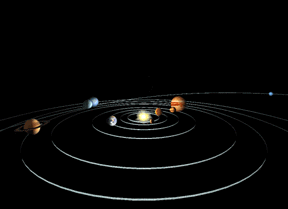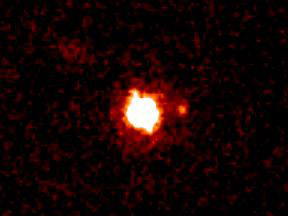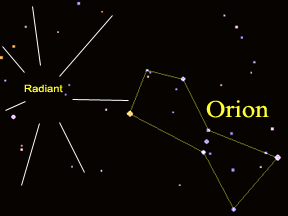Click on image for full size
Original animation by Windows to the Universe staff (Randy Russell).
Elliptical Orbits
Do you think Earth moves around the Sun in a circle? That is almost true, but not quite. The shape of Earth's orbit isn't quite a perfect circle. It is more like a "stretched out" circle or an oval. Mathematicians and astronomers call this shape an "ellipse".
An ellipse can be long and skinny. An ellipse can be very round, almost like a perfect circle. Scientists need a way to describe how round or "stretched out" an ellipse is. They use a number to describe this, and call it the "eccentricity" of the ellipse. Eccentricity is always between zero and one for an ellipse. If it is close to zero, the ellipse is nearly a circle. If it is close to one, the ellipse is long and skinny.
Earth's orbit is almost a circle. It has an eccentricity of less than 0.02, which is almost zero! Pluto's orbit is more elliptical. Pluto's orbit has an eccentricity of almost 0.25. Some comets have very long, skinny orbits, with an eccentricity of 0.9 or more.
The Sun is not quite at the center of a planet's orbit. An ellipse has a point inside it called a "focus". The focus is a little away from the center. The Sun is at the focus of an elliptical orbit.
A planet gets closer to the Sun at some times during its orbit. At other times, it moves further away. When it is very close, astronomers say it is at perihelion. Perihelion is Greek for "close to the Sun". When it is far away, we say that it is at aphelion. Aphelion means "away from the Sun" in Greek. Helios is the Greek word for the Sun.
Johannes Kepler was a German astronomer. He lived during the 17th century. He discovered some important laws about how planets move. His First Law says that planets move in elliptical orbits. His Second Law says that planets move fastest at perihelion and slowest at aphelion.
The advanced version of this page has more information about the math of ellipses.


